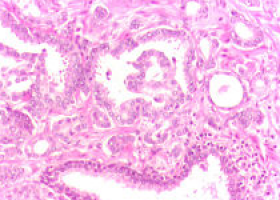
Targeted therapy with BRAF-MEK inhibitors is an effective treatment for patients with advanced melanoma that cannot be surgically removed or has spread to other areas of the body.
However, many patients become resistant to the therapy, and this can often lead to further metastasis.
Moffitt Cancer Center researchers who helped develop this type of combination therapy are now working to better understand what leads to this resistance in hopes of developing ways to overcome it.
In a new article published in the Journal of Investigative Dermatology, Moffitt researchers identify erythropoietin-producing hepatocellular receptor A2 (EphA2) as a driver of metastasis and BRAF-MEK inhibitor resistance in melanoma.
EphA2 is a tyrosine kinase receptor that helps maintain a stable environment in normal cells.
However, EphA2 is often overexpressed in many cancers and plays a critical role in its growth.
Its exact function depends upon the signalling pathway: canonical and noncanonical.
The canonical pathway inhibits cancer cell proliferation and acts as a tumour suppressor.
The noncanonical pathway has the opposite effect, promoting tumour survival and metastasis.
The Moffitt team, in collaboration with scientists at Sanford Burnham Prebys Medical Discovery Institute, focused on the noncanonical pathway of EphA2.
Using comprehensive mass spectrometry-based phosphoproteomics, the researchers mapped the signalling network driven by noncanonical EphA2 and found that it induces an amoeboid phenotype that enhances metastatic potential.
"This is important because an amoeboid phenotype enhances metastatic potential by helping to protect melanoma cells that have entered the blood stream from shear stress and allowing the cells to adhere to endothelial cells in other areas of the body," said Inna Smalley, Ph.D., study author and assistant member in the Cancer Physiology Department at Moffitt.
The research team further confirmed the findings by developing a mouse model using melanoma cells transduced with EphA2-S897E, the noncanonical pathway, and found a significantly higher number of metastases to the lungs.
"We hope that having a better understanding on what drives resistance to BRAF and BRAF-MEK inhibitor therapy and further metastasis will allow us to better understand the process of therapy escape and develop new treatment strategies for melanoma patients," said Keiran Smalley, Ph.D., lead study author and director of the Donald A. Adam Melanoma and Skin Cancer Center of Excellence at Moffitt.
Source: Moffitt Cancer Center
The World Cancer Declaration recognises that to make major reductions in premature deaths, innovative education and training opportunities for healthcare workers in all disciplines of cancer control need to improve significantly.
ecancer plays a critical part in improving access to education for medical professionals.
Every day we help doctors, nurses, patients and their advocates to further their knowledge and improve the quality of care. Please make a donation to support our ongoing work.
Thank you for your support.